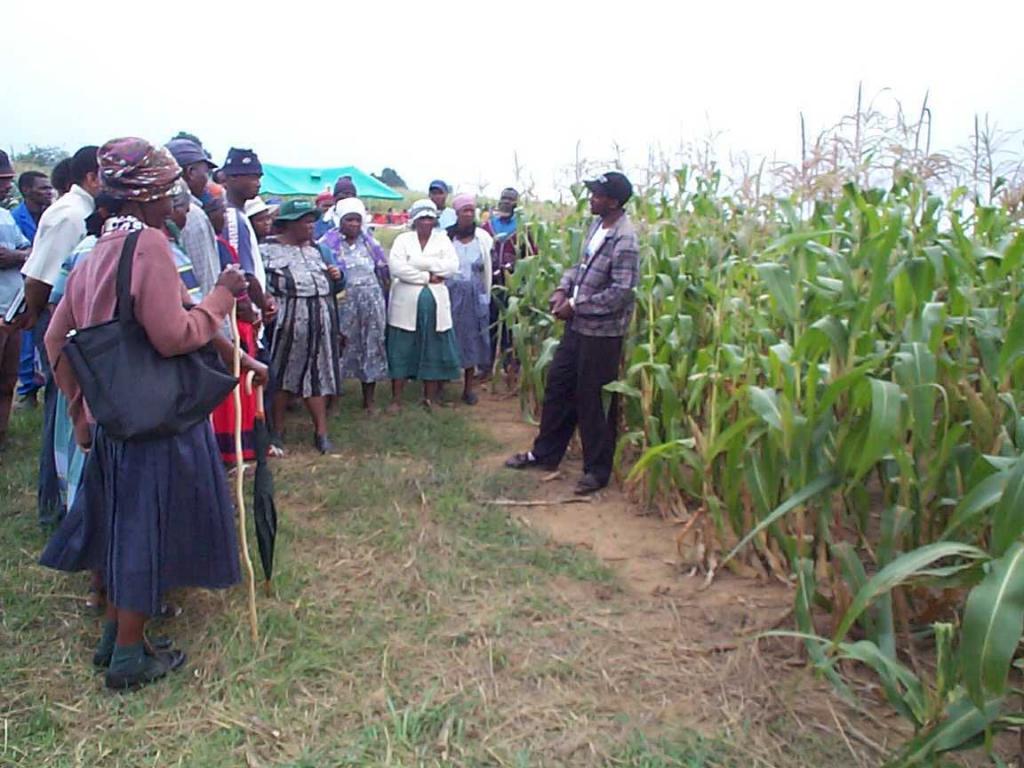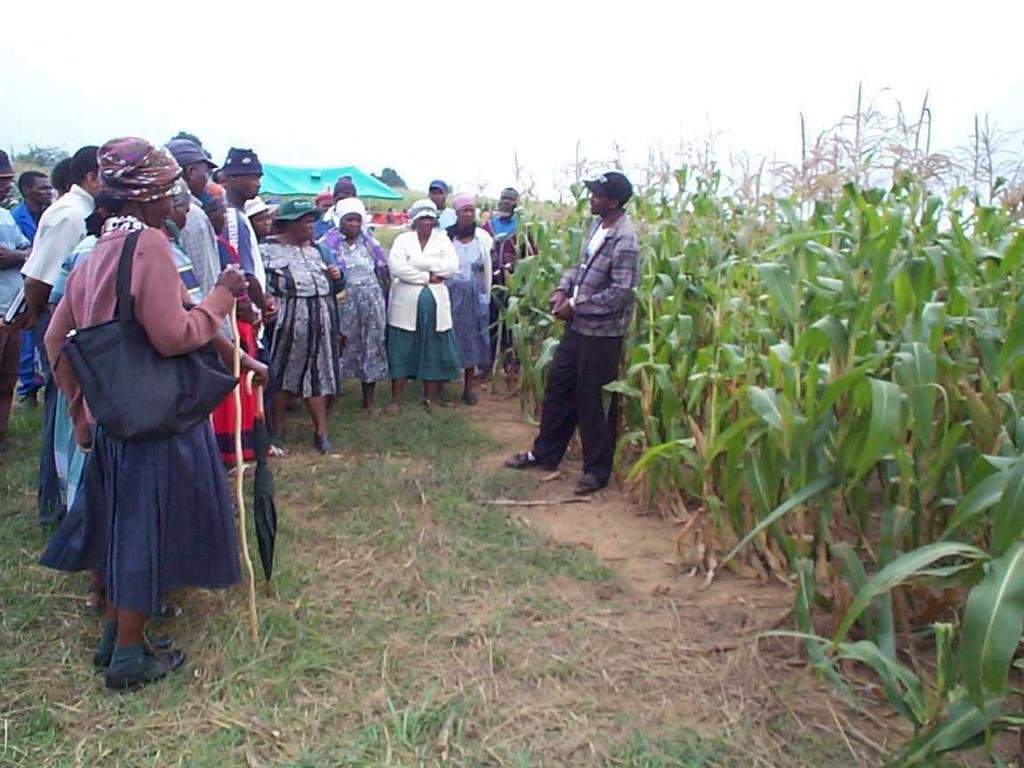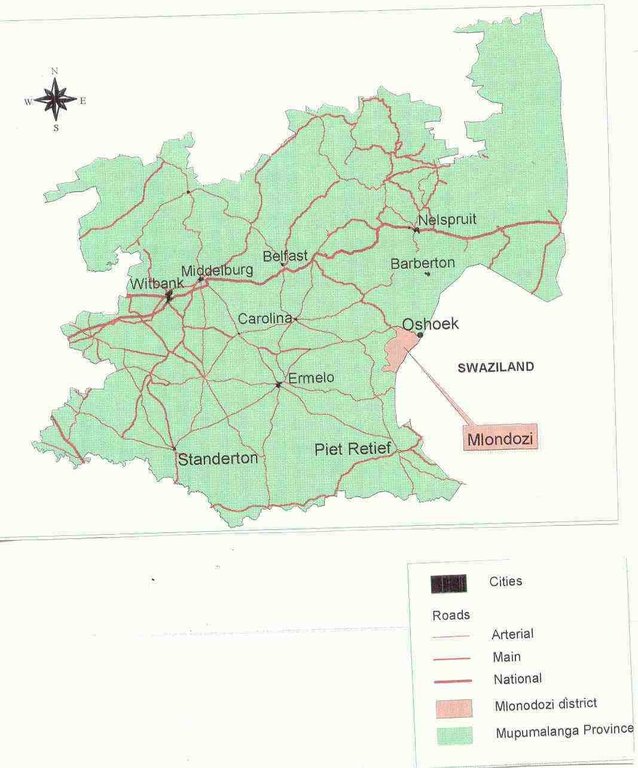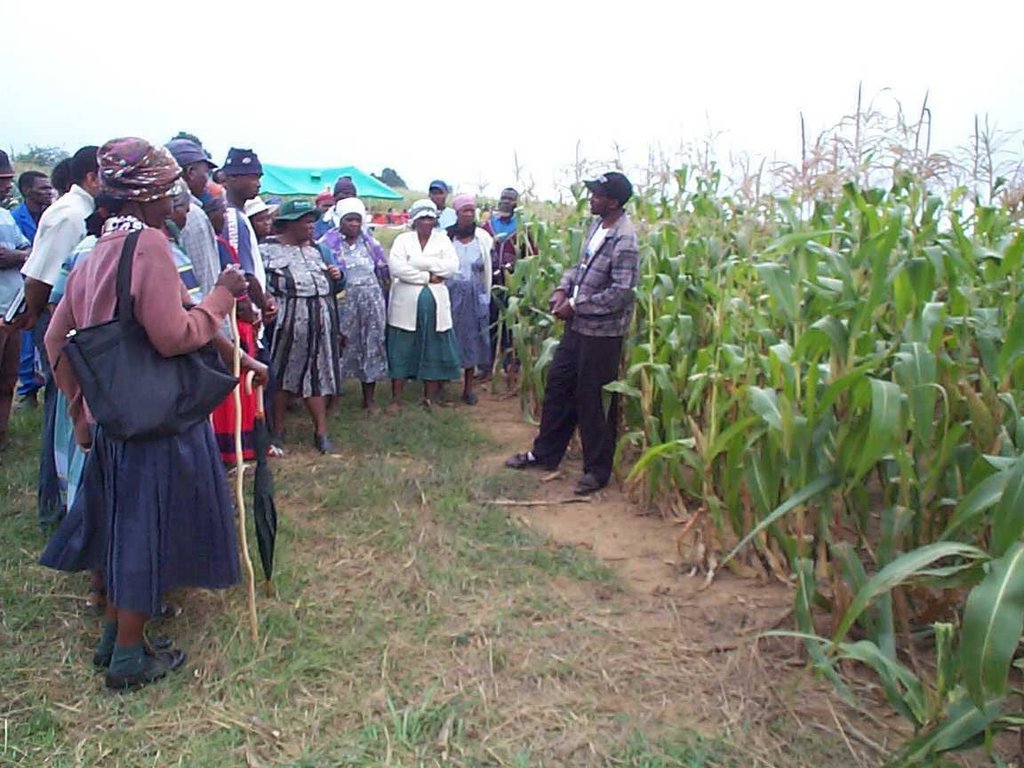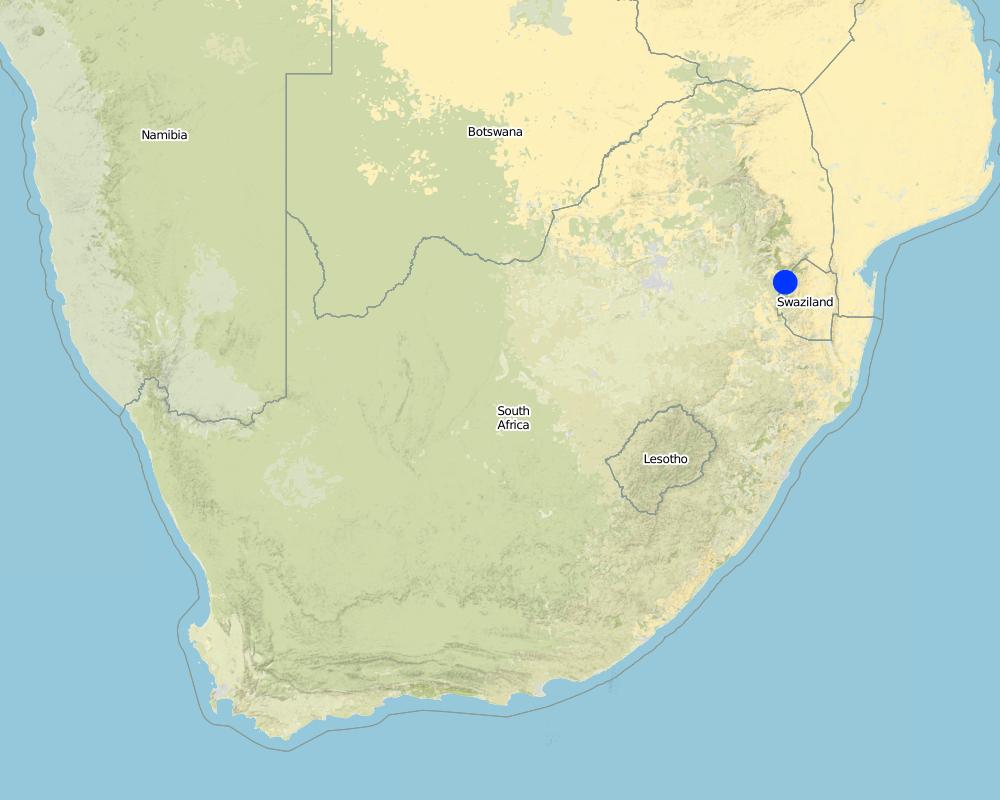Farmers involved in own development [南非]
- 创建:
- 更新:
- 编制者: Hester Gertruida Jansen van Rensburg
- 编辑者: –
- 审查者: Fabian Ottiger
approaches_2337 - 南非
查看章节
全部展开 全部收起1. 一般信息
1.2 参与方法评估和文件编制的资源人员和机构的联系方式
有助于对方法进行记录/评估的机构名称(如相关)
Agricultural Research Council (ARC) - 南非1.3 关于使用通过WOCAT记录的数据的条件
编制者和关键资源人员接受有关使用通过WOCAT记录数据的条件。:
是
1.4 SLM技术问卷的参考
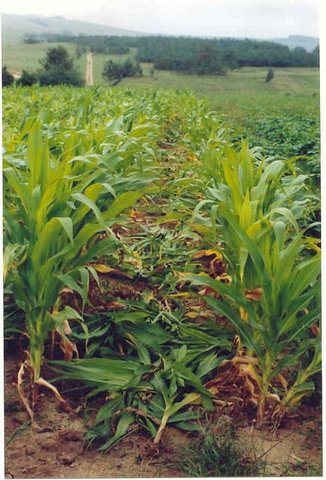
Conservation Agriculture [南非]
Conservation agriculture included aspects such as crop rotation, mulching and no-tillage.
- 编制者: Hester Gertruida Jansen van Rensburg
2. SLM方法的描述
2.1 该方法的简要说明
Planting without ploughing in a crop rotation system to improve moisture management, reduce erosion and increase crop yield.
2.2 该方法的详细说明
该方法的详细说明:
Aims / objectives: Farmers deal with major problems such as shortages and bad implements, soil erosion and high input costs. The purpose of the project is to involve farmers in their own development, by demonstrating and training in Conservation Agriculture technologies. The methods of doing this include on-farm demonstrations (farm-led) and training courses (discovery-learning courses). The project is in the final stage; the exit plan is already implemented. The participants are both land owners and managers of the project.
2.3 该方法的照片
2.5 采用该方法的国家/地区/地点
国家:
南非
区域/州/省:
Mpumalanga
Map
×2.6 该方法的开始和终止日期
终止年份(若不再采用该方法):
2002
2.7 方法的类型
- 基于项目/方案
2.8 该方法的主要目的/目标
The Approach focused mainly on SLM with other activities
To empower community to take ownership of the projects. To train community in sustainable utilisation of their Natural Resources. To improve food security.
The SLM Approach addressed the following problems: Physical and chemical degraded land. Changing of attitudes and getting community to take ownership of project.
2.9 推动或妨碍实施本办法所适用的技术的条件
财务资源和服务的可用性/可得性
- 阻碍
Agriculture - high input cost with low return
Treatment through the SLM Approach: Reduce input cost
法律框架(土地使用权、土地和水使用权)
- 启动
The existing land ownership, land use rights / water rights moderately helped the approach implementation: hinder: moderate
- 阻碍
No land tenure
Treatment through the SLM Approach:
了解SLM,获得技术支持
- 阻碍
Lack of knowledge on improve agriculture technology
Treatment through the SLM Approach: Training
3. 相关利益相关者的参与和角色
3.1 该方法涉及的利益相关者及其职责
- 当地土地使用者/当地社区
Mlondozi Community
Working land users were work equally divided between men and women (Men - 60% Women - 40%). Socially disadvantaged included by the Agriculture Development Committee in consultation with farmer groups.
- NGO
Agriculture Research Council - Institute for Soil, Climate & Water
- 国家政府(规划者、决策者)
Mpumalanga Department of Agriculture, Environment & Conservation
3.2 当地土地使用者/当地社区参与该方法的不同阶段
| 当地土地使用者/当地社区的参与 | 指定参与人员并描述活动 | |
|---|---|---|
| 启动/动机 | 外部支持 | Mainly:interviews/questionnaires; partly: rapid/participatory rural appraisal |
| 计划 | 互动 | Mainly: public meetings; partly: workshops/seminars |
| 实施 | 自我动员 | responsibility for major steps; Study groups/Training/Farm-led demo's |
| 监测/评估 | 互动 | Mainly: interviews/questionnaires; partly: reporting; |
| Research | 被动 | on-farm; On-farm research - technologies implemented on-farm by farmer-led demo's. |
3.4 有关SLM技术选择的决策
具体说明谁有权决定选择要实施的技术:
- 主要是土地使用者,由SLM专家提供支持
解释:
land user driven (bottom-up).
Decisions on the method of implementing the SLM Technology were made by mainly by land users supported by SLM specialists. land user driven (bottom-up).
4. 技术支持、能力建设和知识管理
4.1 能力建设/培训
是否为土地使用者/其他利益相关者提供培训?:
是
明确受训人员:
- 土地使用者
- SWC specialists, extensionists/trainers
培训形式:
- 农民对农民
- 示范区域
- 公开会议
- 课程
涵盖的主题:
Farm planning/Soil fertility/Management/Post management/No-tillage management/etc.
4.2 咨询服务
土地使用者有权使用咨询服务吗?:
是
指明是否提供了咨询服务:
- 在土地使用者的土地上
- 在固定中心
- Meetings and courses
说明/注释:
Name of method used for advisory service: Farming Systems Research & Extension; Key elements: Training, Demonstrations, Participation; 1) Mainly: government's existing extension system, Partly: non-governmental agency. Extension staff: mainly government employees 3) Target groups for extension: land users; Activities: Farmer groups/On-farm - Farmer-led demonstrations
Advisory service is very adequate to ensure the continuation of land conservation activities; Very well understanding of SWC technology.
4.3 机构强化(组织发展)
是否通过这种方法建立或加强了机构?:
- 是,非常
具体说明机构的强化或建立程度:
- 本地
具体说明支持类型:
- 能力建设/培训
4.4 监测和评估
监测和评估是该方法的一部分吗?:
是
注释:
bio-physical aspects were regular monitored through observations
socio-cultural aspects were regular monitored through observations
economic / production aspects were regular monitored through measurements
no. of land users involved aspects were regular monitored through measurements
management of Approach aspects were regular monitored through measurements
There were few changes in the Approach as a result of monitoring and evaluation: Had to focus more on participatory training.
4.5 研究
研究是该方法的一部分吗?
是
明确话题:
- 技术
提供进一步的细节,并指出是谁做的研究:
Fertiliser calibration trails/Cultivar (different crops) trails, etc.
Research was carried out on-farm
5. 融资和外部物质支持
5.1 该方法中SLM组成部分的年度预算
如果不知道准确的年度预算,请给出一个范围:
- 100,000-1,000,000
注释(例如主要的资助来源/主要捐助者):
Approach costs were met by the following donors: government (national - NDA): 90.0%; international non-government (-): 10.0%
5.2 为土地使用者提供财政/物质支援
土地使用者是否获得实施该技术的财政/物质支持?:
是
5.3 对特定投入的补贴(包括劳动力)
- 农业
| 具体说明哪些投入得到了补贴 | 程度如何 | 对补贴做出具体说明 |
|---|---|---|
| 种子 | 部分融资 | |
| 化肥 | 部分融资 | |
如果土地使用者的劳动力是一项重要的投入,那么是不是:
- 自愿
5.4 信用
是否根据SLM活动的方法给予信用值?:
否
6. 影响分析和结论性陈述
6.1 方法的影响
该方法是否帮助土地使用者实施和维护SLM技术?:
- 否
- 是,很少
- 是,中等
- 是,支持力度很大
Conservation Agriculture technology - new technologies (mulch, no-tillage, crop rotation).
该方法是否改善了阻碍SLM技术实施的土地使用权/用户权问题?:
- 否
- 是,很少
- 是,中等
- 是,支持力度很大
The problem is likely to be overcome in the near future. Farmers applied for land tenure.
Did other land users / projects adopt the Approach?
- 否
- 是,很少
- 是,中等
- 是,支持力度很大
Lusikisiki LandCare Project, Bergville LandCare Project, Bizane LandCare Project
6.3 方法活动的可持续性
土地使用者能否维持通过该方法实施的措施(无外部支持的情况下)?:
- 是
6.4 该方法的长处/优点
| 土地使用者眼中的长处/优势/机会 |
|---|
| Like new way of training (How to sustain/ enhance this strength: Learning-by-doing courses) |
| Increase income |
| 编制者或其他关键资源人员认为的长处/优势/机会 |
|---|
| Ownership of project (How to sustain/ enhance this strength: Follow-up meetings and training) |
| On-farm |
| Extension services (How to sustain/ enhance this strength: On-going support) |
6.5 该方法的弱点/缺点以及克服它们的方法
| 编制者或其他关键资源人员认为的弱点/缺点/风险 | 如何克服它们? |
|---|---|
| Can only involve a certain amount of farmers every year | Train trainers |
7. 参考和链接
7.1 方法/信息来源
- 实地考察、实地调查
- 与土地使用者的访谈
7.2 参考可用出版物
标题、作者、年份、ISBN:
Demonstration and assessment of sustainable land management practices in the Mlondozi district of Mpumalanga. Du Preez, Kidson, Beukes & Smith, 1998, 1999, 2000.
可以从哪里获得?成本如何?
ARC - ISCW
链接和模块
全部展开 全部收起链接

Conservation Agriculture [南非]
Conservation agriculture included aspects such as crop rotation, mulching and no-tillage.
- 编制者: Hester Gertruida Jansen van Rensburg
模块
无模块


